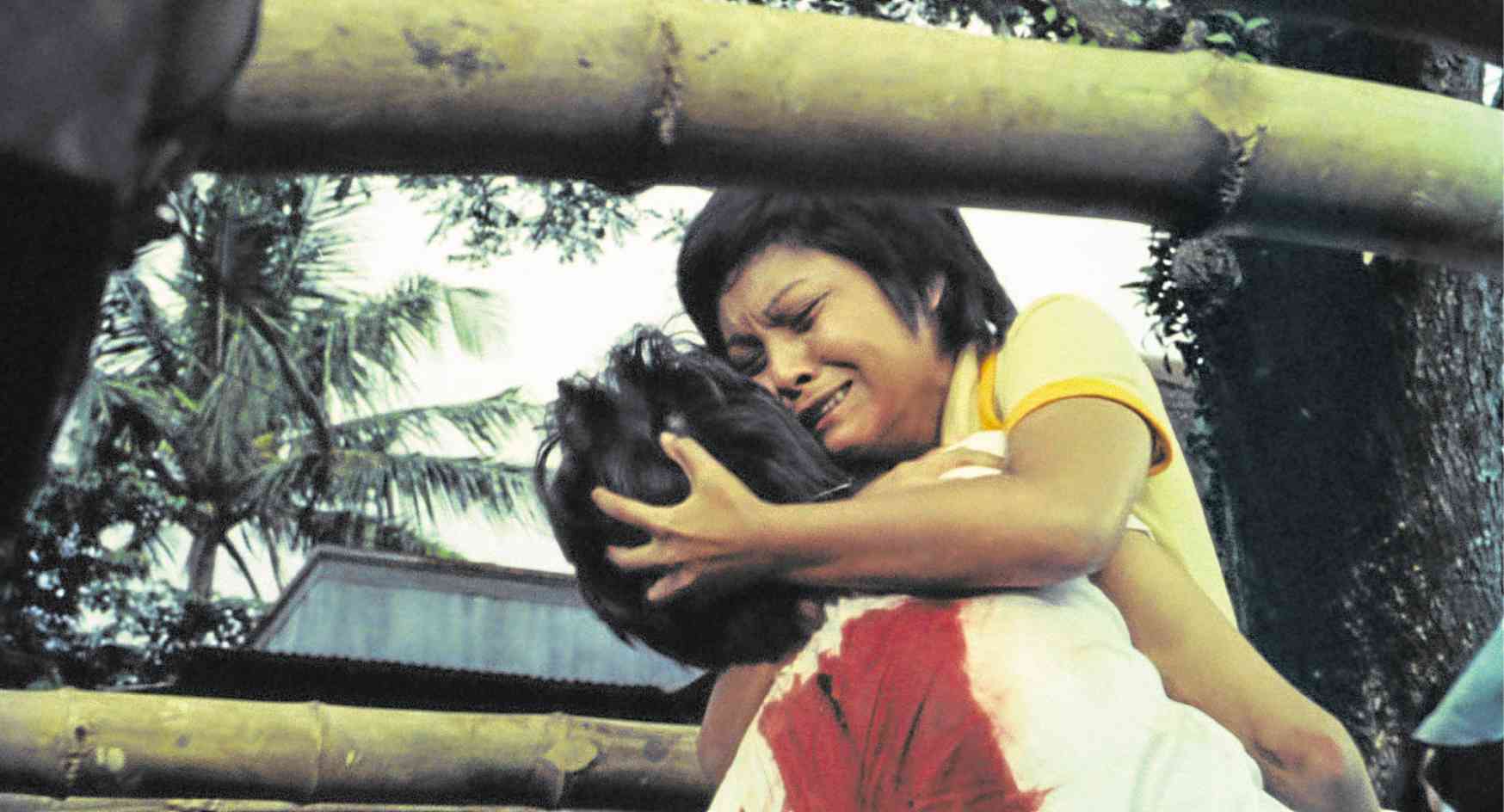‘Gamu-gamo’ is forever
Surely, there is more to Lupita Aquino-Kashiwahara’s 1976 anti-US bases drama, “Minsa’y Isang Gamu-gamo,” than lead star Nora Aunor’s immortal line: “My brother is not a pig!” Today’s batch of cineastes can find out for themselves what the fuss is all about because “Gamu-gamo” has been restored by ABS-CBN Film Restoration.
Leo P. Katigbak, head of ABS-CBN Film Restoration, feels “it’s vital for a new generation of viewers to discover films that have brought the country and our artists glory and honor.”
“Gamu-gamo” is the first Kashiwahara film restored by ABS-CBN. “She was one of the most respected directors back in the day. So we are proud to bring her work back,” he asserted.
“Also, the film is considered one of Nora’s best films, and it’s good to remind audiences why she was the reigning Superstar for decades,” Katigbak quipped. “More specifically, her line, ‘My brother is not a pig,’ is one of the most mimicked or memed quotes in local movies. I doubt if many of today’s audience even know where it came from. Now, they can hear the line in the context of the movie, too.”
Without a doubt, “Gamu-gamo” is a cinematic gem that should be treasured—not only because of its political theme, but also because of its cultural significance.
“Gamu-gamo” not only dared to tackle American military presence at the height of martial law, it was produced by Premiere Productions in 1976, widely considered as Philippine cinema’s golden year, which yielded a bumper crop of classics: Eddie Romero’s “Ganito Kami Noon…Paano Kayo Ngayon,” Lino Brocka’s “Insiang,” Ishmael Bernal’s “Nunal sa Tubig” and Mike de Leon’s “Itim.” These four films, along with “Gamu-gamo,” vied for best picture in the inaugural Gawad Urian. (The top plum went to Romero’s historical epic.)
The Superstar told the Inquirer that she’s happy that the film has been restored. “Isa siyang mahalagang pelikula…na kapupulutan ng aral. Tayong lahat ay may matututunan sa pelikulang ito, lalo na ang mga kabataan at estudyante.”
Kashiwahara, who is now based in the United States, told the Inquirer via e-mail: “I’m very pleased that the film has been restored so it can be viewed again, especially by the current generation which wasn’t around to experience the events portrayed in the film. It is part of their history, too. Although it’s a dramatic movie, many of the scenes are based on real stories, real incidents, real tragedies.”
Producer Digna Santiago recalled that when she and her brother, the late filmmaker Cirio H. Santiago, were contemplating on doing another movie with the Superstar, they were torn between aiming for “box office success or prestige.”
“In the end, we opted to make a movie that would sweep awards,” Santiago shared with the Inquirer. It bagged the major honors at the 1977 Famas—including best picture, director and story and screenplay for Marina Feleo-Gonzales.
Santiago recalled that even though the film was set in faraway Valenzuela, Bulacan, they didn’t have problems with La Aunor. “At the time, Valenzuela wasn’t part of Metro Manila yet. It was still a probinsiya!”
The singer-actress would dutifully report for work and, once a week, would wait patiently for her director, who would visit her brother, the late Sen. Ninoy Aquino, who was then detained in Fort Bonifacio, Santiago recounted.
“Digna was one of the best,” Kashiwahara remarked. “As a director, my energies were focused on the creative, and Digna made sure I was free from extraneous distractions. She contributed immeasurably to the success of the effort.”
According to Santiago, she and the director agreed with Aunor, who had suggested her real-life brother, the late Eddie Villamayor, for the part of the slain sibling. “I knew the fans would really be heartbroken when he got killed by an American soldier,” the producer looked back. Kashiwahara concurred: The casting coup “gave authenticity to the searing scenes of grief, pain and loss.”
Aunor was proud of the film in general and of her brother’s performance in particular. “Nakitaan ang kapatid kong si Buboy ng talento sa pag arte.”
“When the film was made in the 1970s, US military bases were a dominant presence in the Philippines and, in many cases, Filipinos were treated as second-class citizens in our own country. So the film was important in exposing these abuses. Some have called the film anti-American; I viewed it as pro-Filipino,” the director clarified.
“Ninoy told us that the film would outlive all of us and would remain relevant for as long as there are American bases outside the US,” Santiago said. In 1991, it was staged as a play by Peta, with Aunor reprising her role.
“It was filmed during martial law, and there was concern that the pro-American Marcos administration would block its release. But it was allowed,” Kashiwahara pointed out. “Shortly after its run, we received a request from the US Embassy for a viewing copy. It was then that I knew the film was at least creating a discussion on the subject matter, which was the ultimate goal: to improve the lives, safety and, most of all, dignity of the Filipino people.”
The restored film will be unveiled on Oct. 16, 9 p.m. at Santolan Town Plaza, as part of Cinema One Originals fest.


